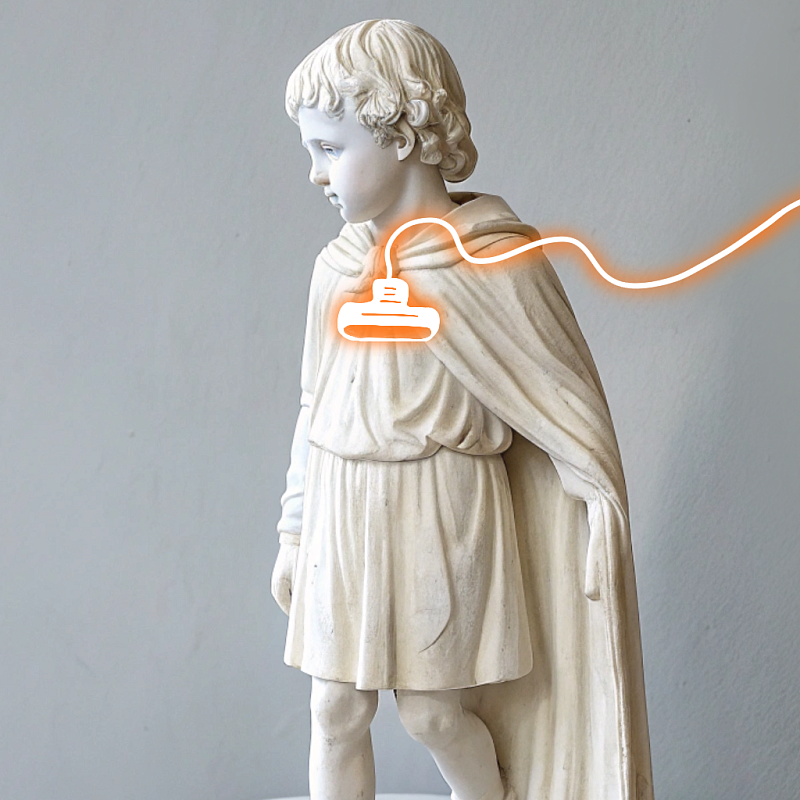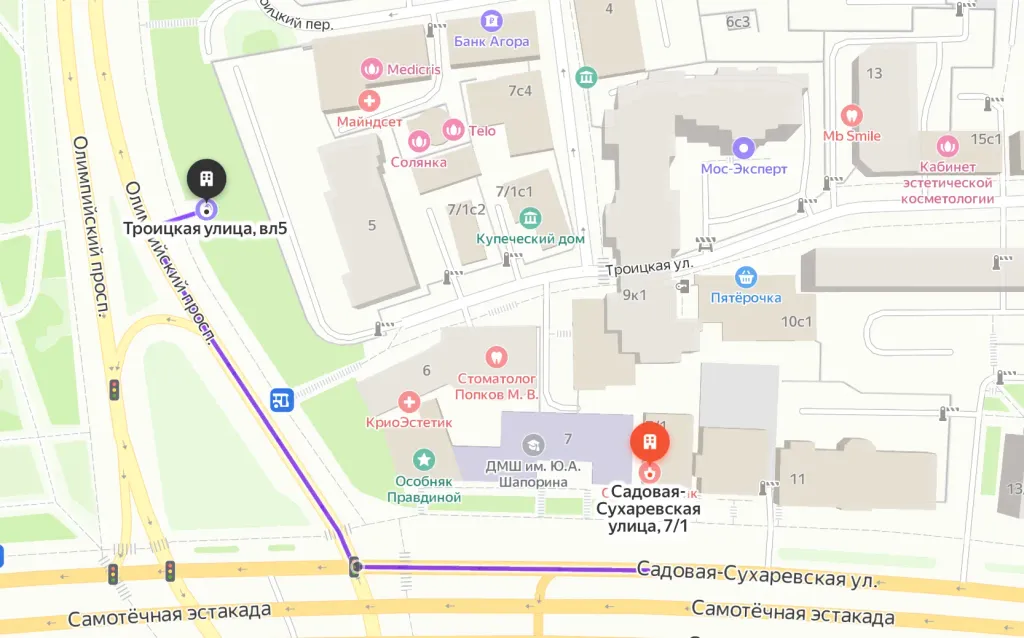Pediatric breast ultrasound
Pediatric breast ultrasound is a non-invasive diagnostic procedure used to assess the structure of breast tissue and detect potential abnormalities such as inflammation, cysts, and tumors. It is a safe and radiation-free method based on the use of ultrasound waves, making it suitable even for the youngest patients.

Ultrasound provides visualisation of the breast tissue and regional lymph nodes, facilitating differentiation between benign and suspicious processes. Some cases may require additional tests or follow-up observations.
Preparation No special preparation is required for girls and adolescents. We recommend scheduling an ultrasound scan during the first 5-9 days of the menstrual cycle, if it has started. This is when breast tissue is less swollen, making it easier to visualize. Upper body clothing needs to be removed.
The child is positioned on a couch, either lying down or sitting, depending on their age and the area being examined. The arm of the examined side is placed behind the head to facilitate access. A diagnostician applies a special gel and uses an ultrasound sensor to thoroughly examine the breast tissue and lymph nodes. The procedure takes 10-20 minutes.
We use advanced high-frequency linear ultrasound machines. This helps us get highly detailed images, showing the smallest tissue changes.
Children can return to their regular activities immediately after the procedure. Breast ultrasound doesn't require recovery and does not cause discomfort. Results are usually available immediately and are sent to the attending physician or pediatrician.
Benefits
Safety
Breast ultrasound doesn't use ionising radiation and can be performed repeatedly.
ClarIty
Detailed visualisation of soft tissues in children and adolescents.
Comfort
The procedure is painless and doesn't require any preparation.
Early diagnostics
Helps identify abnormalities before symptoms appear.
Specialists
Find a SpecialistIndications and contraindications
Indications
Pain or lumps in the breast
Suspected hormonal disorders
Monitoring the development of the mammary glands in girls during puberty
Hereditary predisposition to mammary gland diseases
Similar referral activities
Pediatric musculoskeletal ultrasound
Pediatric musculoskeletal ultrasound examines the musculoskeletal system in children using ultrasound waves to assess the condition of muscles, tendons, joints, and bone surfaces. It is used to detect injuries, inflammation, ligament tears, and minor fractures that may not be visible on X-rays.
Pediatric abdominal ultrasound
Pediatric abdominal ultrasound is a safe, accurate and painless diagnostic examination of internal organs: the liver, gallbladder, pancreas, spleen, intestines, lymph nodes, and abdominal aorta.
Pediatric joint ultrasound
Joint ultrasound is a non-invasive diagnostic procedure used to obtain detailed assessment of periarticular structures, including cartilage, ligaments, tendons, and soft tissues. It is particularly relevant in children, as mobility and active growth may be accompanied by pain and injuries.
Pediatric thyroid ultrasound
Pediatric thyroid ultrasound is a safe and painless diagnostic procedure that helps assess the structure, size, and blood supply of a child's thyroid gland. The examination helps identify congenital anomalies, thyroiditis, cysts, tumors, and other pathologies at the earliest stages.
Pediatric peripheral nerve ultrasound
Peripheral nerve ultrasound is a safe way to assess the nervous system, helping identify various pathological changes that disrupt the conduction of nerve impulses. This method helps diagnose inflammation and trauma in nervous system dysfunction in children.
Pediatric pelvic ultrasound
Pelvic ultrasound is a safe and highly informative imaging of internal organs of the pelvis in children. This examination helps assess the state of the bladder, uterus and ovaries in girls, as well as the prostate gland and seminal vesicles in boys.
How to reach
How to get
From the Belorusskaya metro station of the Zamoskvoretskaya line - exit 4 After exiting the subway, walk through the pedestrian tunnel and climb the stairs. Move towards the railway tracks, go down the stairs immediately after them and walk along the house, then turn right onto 1st Yamskoye Pole Street. At the turn to 3rd Yamsky Pole Street, cross the road at the pedestrian crossing and continue along 1st Yamsky Field Street, after a few buildings on the left you will see Olympus Clinic MARS.
Travel time
9 minutes
Landmark
Olympus Clinic MARS sign
How to get
From the Belorusskaya metro station of the Ring line - exit 2. After exiting the subway, turn left and walk to the pedestrian crossing. Cross the road through two pedestrian crossings and move along the Tverskoy overpass. Go down the stairs immediately after the railway tracks, walk along the house, then turn right onto 1st Yamskoye Pole Street. At the turn to 3rd Yamsky Pole Street, cross the road at the pedestrian crossing and continue along 1st Yamsky Field Street, after a few buildings on the left you will see Olympus Clinic MARS
Travel time
11 minutes
Landmark
Olympus Clinic MARS sign
From the metro station "Tsvetnoy Bulvar"
1 exit to the city, then left to the Garden Ring, at the crossing to the right, crossing the boulevard, one more crossing and at the traffic light to the left. The Olymp Clinic building is located overlooking the Garden Ring to the right of the crossing. Travel time is approximately 9 minutes. Landmark - sign Olymp Clini
From the metro station "Sukharevskaya"
Exit 3 from the metro and 640 meters straight ahead, the clinic will be on the right. Landmark - sign Olymp Clinic
Parking lot map
Exit 3 from the metro and 640 meters straight ahead, the clinic will be on the right. Landmark - sign Olymp Clinic

From Sokol metro station
The last car from the center: follow the signs for Exit 5. From the glass doors to the right and go to the end of the passage. Exit to the city by the steps to the left. After exiting the crossing to the street, go straight along Leningradsky Prospekt to the intersection with Chapaevsky Lane. Next, turn right (onto Chapaevsky Lane) and walk to the Triumph Palace residential complex. Entrance to the territory: through checkpoint No. 1, opposite the Vkusville store, you will need to present your passport. After passing through the checkpoint, go up the stairs to the fountain, opposite it you will see our clinic.
Travel time
10-12 minutes
From the Airport metro station
The first car from the center: follow the Exit 2-3 signs. Turn left out of the glass doors and walk to the end of the passage. After exiting the crossing to the street, go straight along Leningradsky Prospekt to the intersection with Chapaevsky Lane. Next, turn left (onto Chapaevsky Lane) and walk to the Triumph Palace residential complex. Entrance to the territory: through checkpoint No. 1, opposite the Vkusville store, you will need to present your passport. After passing through the checkpoint, go up the stairs to the fountain, opposite it you will see our clinic.
Travel time
12-15 minutes
How to get
Entry to the territory is prohibited, but there are free city parking lots around the Triumph Palace residential complex, where you can easily find a place for your car. Free parking area:



